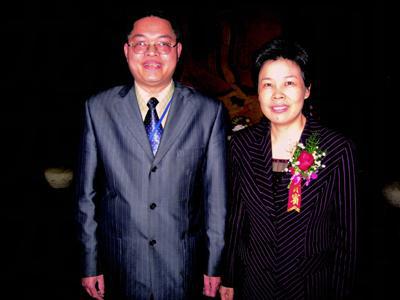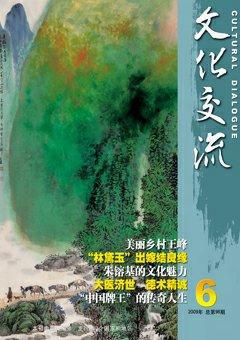Seals Engravings In Memory of Local Greats
Xu Xiaoyang

Situated in eastern Zhejiang, Shaoxing is one of the 24 cities of history and culture declared by the State Council. Mao Zedong commented admiringly on an occasion that Shaoxing was a home of greats who shaped the history and culture of China.
Many organizations in Shaoxing have taken it as their mission to promote the citys historical and cultural personages. Books on the citys past glories have been published. Shaoxing City Association for Local Greats and Culture is one of these organizations. It started a project as soon as it was founded on August 28, 2002. The organization asked its members to come up with good ideas for something that can best promote these historical and cultural figures. After many rounds of discussions, feasibility studies, and preparations over a period of two years, “A Collection of Seals of Shaoxing Greats” was launched. One hundred historical and cultural figures of national renown were presented in the shape of the seals.
The seals were designed and carved by Hu Kailong, an outstanding seal engraver. The images of these great people are presented in relief and the names in intaglio. The seals are reproduced on rice paper with a red ink specially developed and produced by Xiling Seal Engravers Society of Shanghai. The facsimile reproduction of the seals and the images is mounted in one scroll, a traditional Chinese way of displaying a painting. The scroll comes with a book which describes these historical and cultural figures in greater details and with a collection certificate.
Huang Tiande, vice president of Shaoxing City Association for Local Greats and Culture, explains why they finally chose the seal form. It had something to do with his family history. His was an influential family six decades ago in Shaoxing. It ran a flourishing business of seasonings. His grandfather was killed in a Japanese bombing and his grandmother led the whole family in fleeing to the home village. Shortly before Shaoxing was liberated in 1949, some disbanded KMT soldiers came to loot the village. One evening, the grandmother instructed his father, then in his early 20s, to dig out a royal seal, a family heirloom, from a hiding place beneath the floor. The next morning, the young son took it to Shaoxing and sold it before it might fall into the hands of the stragglers. Huang Tiande says that his father sold it hastily for just two dollars. It became his fathers lifelong regret. He mentioned the seal on his deathbed.
The scroll of images and seals has been improved four times as the result of absorbing a wide variety of suggestions and advice. It is now used as a gift in friendly exchanges between Shaoxing and the outside world. So far, it has been given to visitors from countries and regions such as USA, Canada, Singapore, New Zealand, Taiwan and Hong Kong. It is in many individual collections across the country and in the collections of Shaoxing Library and Shaoxing Museum and other local organizations.
The success and growing popularity of the unique seals owe a lot to Huang Tiande. His admiration for great people of his hometown is rooted in his childhood years. The historical and cultural greats who lived in Shaoxing or did great things in Shaoxing make him feel proud of being a native of Shaoxing. By doing researches in recent years on these people and studying their lives and works, he has become sharply aware of their unique charisma and importance. Huang believes that these figures highlight both the history of Shaoxing of the past 5,000 years and the spiritual and cultural legacy that has immediacy today.

Huang has great gratitude toward Shaoxing. His mother died when he was only four. He finished school education with the help of relatives and neighbors and of many individuals he even didnt know. As vice president of the association, what he does is his way of paying back to his hometown.
As one of the founding persons of the private organization without any financial support from government, Huang has served as editor-in-chief of Shaoxing People, the association journal which is distributed free of charge. So far, more than 20 numbers of the journal have been published.
Huang wants the scroll to be a golden name card for Shaoxing. In November of 2008, Huang sent the heads of state of 11 friendly countries a seal scroll of Shaoxing greats accompanied with a copy of the latest journal. He also sent scrolls to the overseas people who have ties with Shaoxing. French Prime Minister Francois Fillon wrote back, expressing his appreciation of the seal scroll and the Shaoxing greats depicted in the scroll.
Some national celebrities have written inscriptions (a traditional Chinese way of expressing a wide range of emotions such as appreciation and admiration as well as expressing spiritual understanding or establishing camaraderie across time and space) in appreciation of the associations endeavor. □

